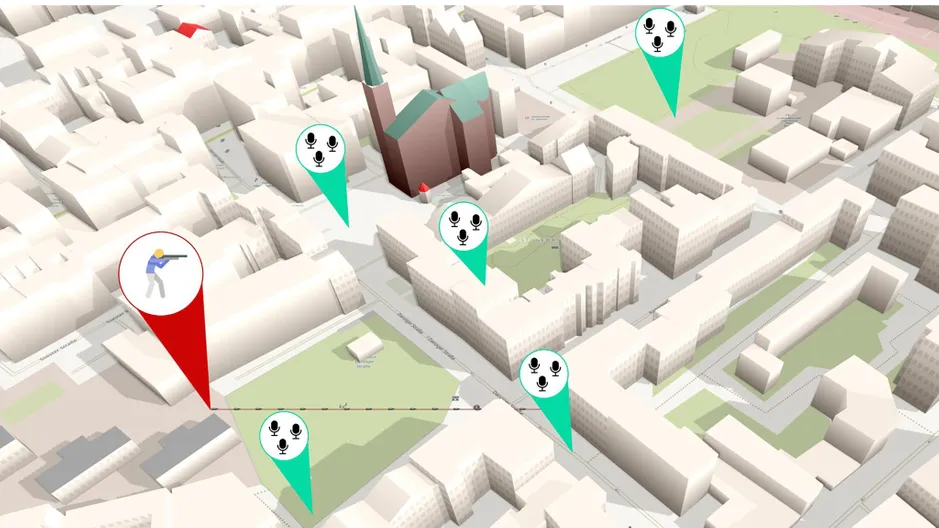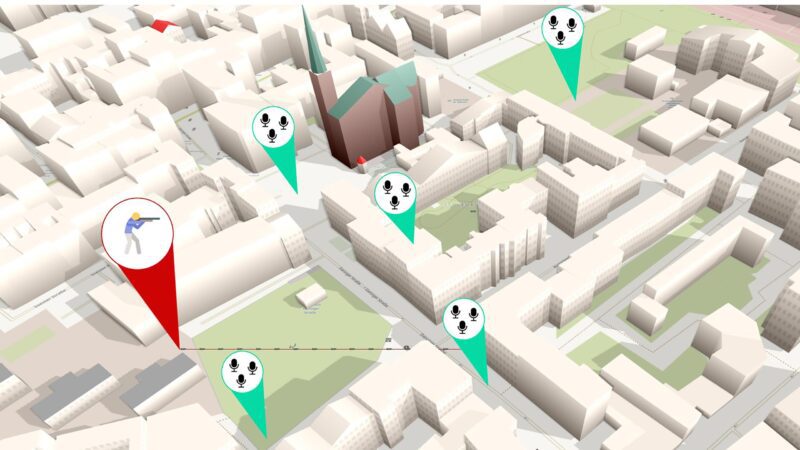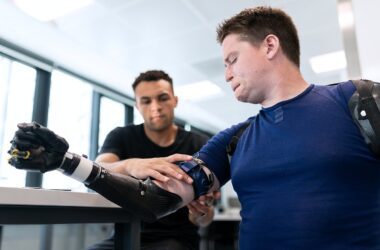
Luisa Still, de Sensor Data and Information Fusion, discutera des facteurs importants pour déterminer la précision de la localisation d’un tireur lors de la 182e réunion de l’ASA. Crédit : Luisa Still
Modélisation et optimisation des réseaux de capteurs pour un environnement spécifique afin d’aider les missions à localiser les tireurs.
Lors d’un tir d’arme à feu, deux événements sonores se produisent : le souffle du canon et l’onde de choc supersonique. Des capteurs acoustiques, tels que des microphones simples ou des réseaux de microphones, peuvent capter ces sons et les utiliser pour localiser approximativement le tireur.
Luisa Still, de Sensor Data and Information Fusion, discutera des facteurs importants pour déterminer la localisation du tireur accuracy as part of the 182nd Meeting of the Acoustical Society of America at the Sheraton Denver Downtown Hotel. Her presentation, “Prediction of shooter localization accuracy in an urban environment,” will take place on May 23, 2022, at 12:45 p.m. EDT.
In an urban setting, buildings or other obstacles can reflect, refract, and absorb sound waves. The combination of these effects can severely impact the accuracy of shooter localization. Preemptively predicting this accuracy is crucial for mission planning in urban environments, because it can inform the necessary number of sensors and their requirements and positions.
Still and her team used geometric considerations to model acoustic sensor measurements. This modeling, combined with information on sensor characteristics, the sensor-to-shooter geometry, and the urban environment, allowed them to calculate a prediction of localization accuracy.
“In our approach, the prediction can be interpreted as an ellipse-shaped area around the true shooter location,” said Still. “The smaller the ellipse-shaped area, the higher the expected localization accuracy.”
The group compared their accuracy prediction to experimental performance under various geometries, weapons, and sensor types. The localization accuracy depended significantly on the sensor-to-shooter geometry and the shooting direction with respect to the sensor network. The smaller the distance between the shooting line and a sensor, the more accurate they could be with their prediction of the source. Adding more sensors increased the accuracy but had diminishing returns after a certain point.
“Each urban environment is too individual (e.g., in terms of layout, building types, vegetation) to make a general recommendation for a sensor set up,” said Still. “This is where our research comes in. We can use our approach to recommend the best possible setup with the highest accuracy for a given location or area.”



